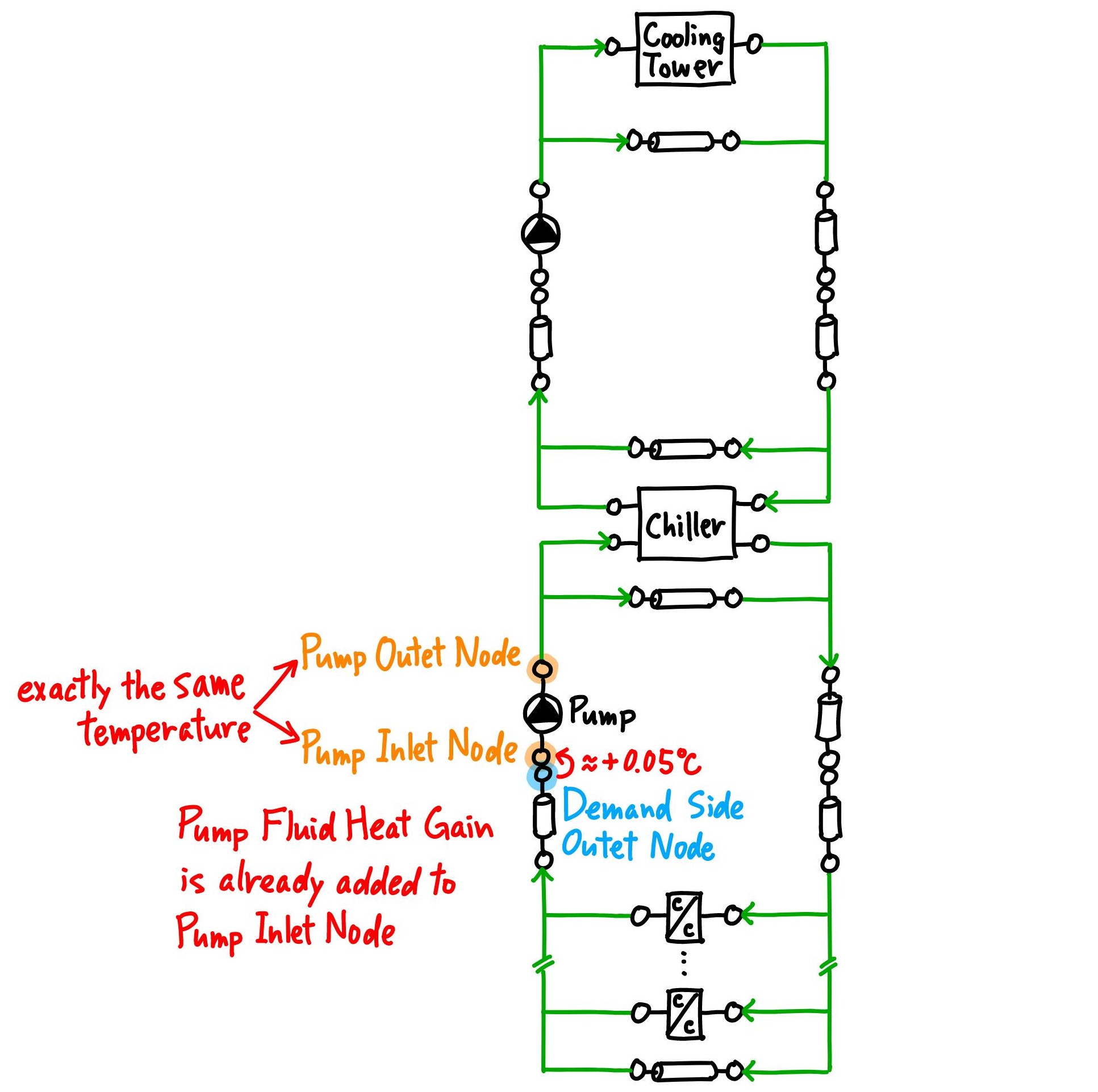Why is Pump Fluid Heat Gain already added to Pump Inlet Node?
EnergyPlus accounts for the heat generated by the pump motor. The heat is added to the water flowing through the pump.
I compared System Node Temperature of Pump Inlet Node and Pump Outlet Node to see how much the water had been heated, and found that they have exactly the same temperature even though Pump Fluid Heat Gain Rate was not zero.
Finally, I found that the temperature of the other Node before the Pump Inlet Node was slightly lower than the temperature of the Pump Inlet Node. The temperature rise was consistent with that calculated from Pump Fluid Heat Gain, the water flow rate and the specific heat of water.
The temperature of Pump Inlet Node is the temperature after Pump Fluid Heat Gain has already been added.
You can see this in any idf files with any pump components. One ExampleFile: 5ZoneWarmest.idf (V23-1-0) with simple PlantLoop as shown below.

This goes against my intuition. In my understanding, Inlet Node of any component should show the condition of the fluid before it is affected by the component itself. Am I wrong? Or are pumps the only exception? Or is this a bug?





@Keigo does this post answer your question? Essentially, EnergyPlus "lumps" the heat capacitance of each side (demand/supply) of the plant loop at the inlet node for that side, as if an imaginary storage tank is located there.
The pump inlet/outlet node temperatures being equal should only happen when the pump is not operating. If the temperatures are equal while there is pump flow, you may have found a bug or it's a very small difference (need more decimal places to confirm).
@Aaron Boranian Thank you for your comment! Loop fluid capacitance and pump heat is indeed the answer to my question. "This so-called pump heat is a complicating factor in plant simulation because the pump heat alters the load on primary equipment. A simple method of accounting for pumping heat is needed that doesn’t increase the difficulties of the numerical solution and in EnergyPlus this accomplished by including the pump heat in the loop capacitance model."
@Aaron Boranian The pump inlet/outlet node temperatures being equal happens when the pump is operating. They are exactly the same to 12 decimal places. It is not a bug. As Engineering Reference above illustrates, EnergyPlus adds pump heat to the well-stirred tank, which looks like the pump heat is added to the pump inlet node. Then, pump inlet/outlet node temperatures should be the same.
I learned something new today. From Eng Ref: "Since EnergyPlus Version 7, this heat is added to the loop capacitance tank(s) rather than at the pump’s outlet and so the outlet temperatue is equal to the inlet temperaure."